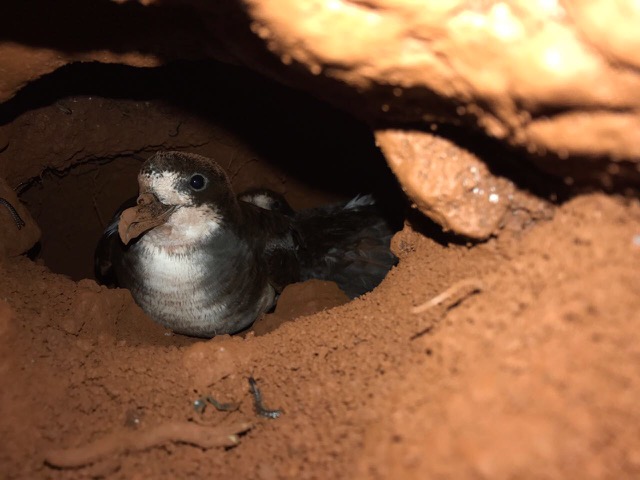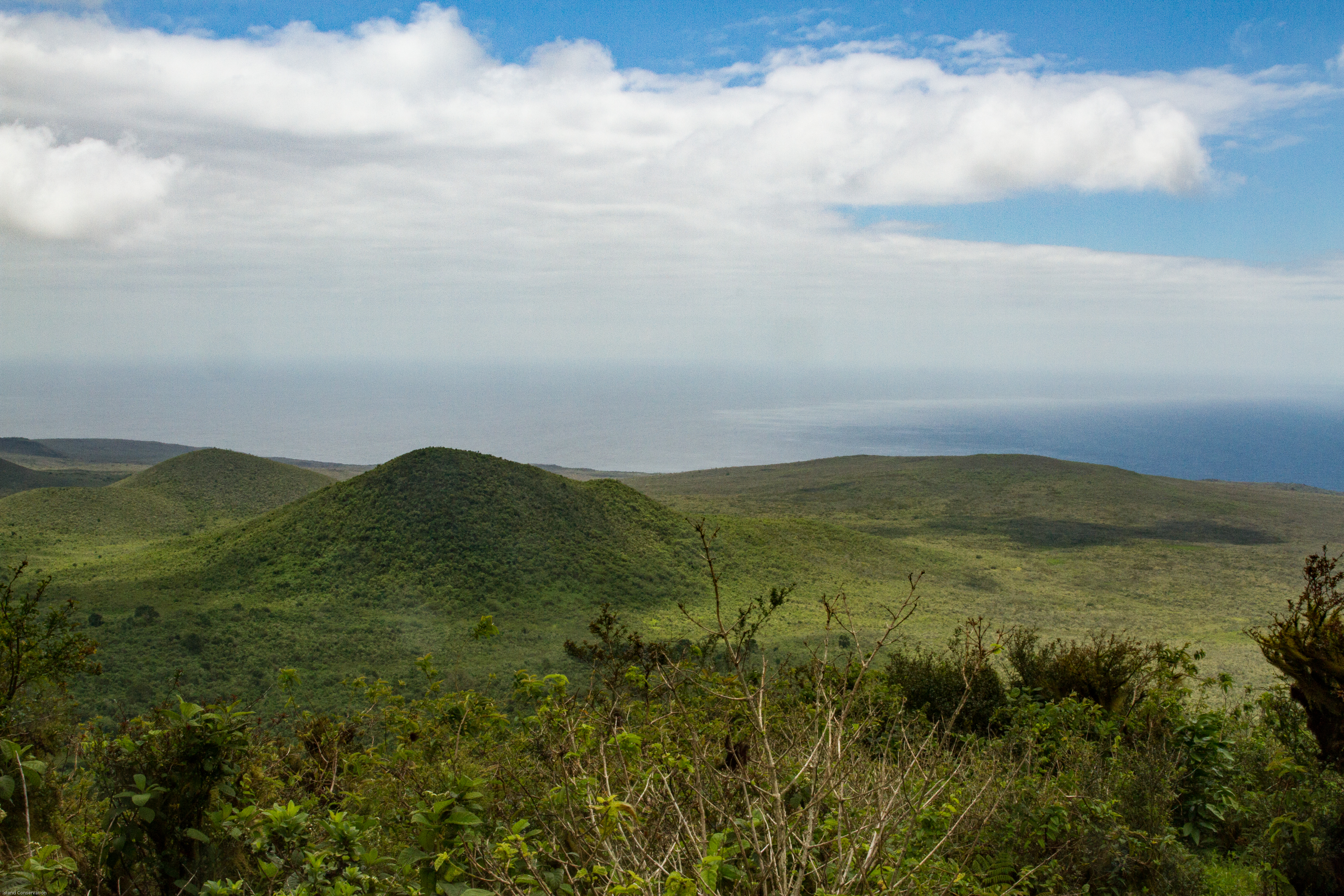 A Galapagos Petrel in its burrow, photograph by Carolina Proaño
A Galapagos Petrel in its burrow, photograph by Carolina Proaño
Welcome news comes from an island in the Galapagos Islands where early signs following a recent eradication operation look promising, especially after the failures on Gough Island in the South Atlantic and Midway Atoll in the North Pacific, where House Mice Mus musculus are sadly still present after eradication operations carried out over the last three years.
The Galapagos Conservation Trust reports on the Floreana Ecological Restoration Project: “Last October, the restoration of Floreana Island reached an exciting milestone, as the eradication of invasive [Black Rats Rattus rattus and House Mice], over a decade in the planning, finally began. The project, led by the Galapagos National Park and the Galapagos Biosecurity Agency in partnership with the Floreana community, co-executed by Fundación Jocotoco and Island Conservation, and supported by Galapagos Conservation Trust, Durrell Wildlife Conservation Trust and others, has as its ultimate aim the reintroduction of 12 locally extinct species and the restoration of the island’s degraded ecosystem. The removal of invasive species is key to the project’s success, and initial indications regarding the eradication of rats and mice, which concluded in December 2023, are positive.”
Successful eradication of Floreana’s introduced rodents should be a help to the island’s breeding population of Critically Endangered Galapagos Petrels Pterodroma phaeopygia, which are endemic to the Galapagos Islands. Floreana supports over 60% of the species’ global population. One study found almost half the Galapagos Petrel nests on Floreana were preyed upon by feral cats Felis catus (and likely also by Black Rats) despite local control efforts. However, no public announcement has yet been made on the outcome of the planned effort to eradicate the cats with meat-based “sausages” containing Para-aminopropiophenone (PAPP) at the same time as the rats and mice (click here).

A view of Floreana Island, photograph from Island Conservation
With the eradication attempt showing promising signs for at least the two rodents (although a final announcement of success usually waits for two years with no signs of them) a decision was made to release the endemic Galapagos finches which had been kept in temporary captivity in aviaries on the island during the baiting operation. A total of 510 finches of five species was released in batches over January and February this year into their natural habitats on the island as part of the Floreana Ecological Restoration Project. Some of the first released birds were radio tracked to assess if it was safe to release all the birds (click here).
Floriana is an inhabited island with a human population of 160. If the rats and mice (and also the cats) have definitely gone, it will join with Australia’s inhabited Lord Howe Island, now free of its rats and mice, as yet another success for what must surely be one of the world’s most important conservation activities: ridding islands of their introduced predators.
With grateful thanks to Kelly Hague, Senior Philanthropy Manager and and Tom O’Hara, Communications Manager, Galapagos Conservation Trust.
John Cooper, Emeritus Information Officer, Agreement on the Conservation of Albatrosses and Petrels, 02 April 2024

 Español
Español  English
English  Français
Français